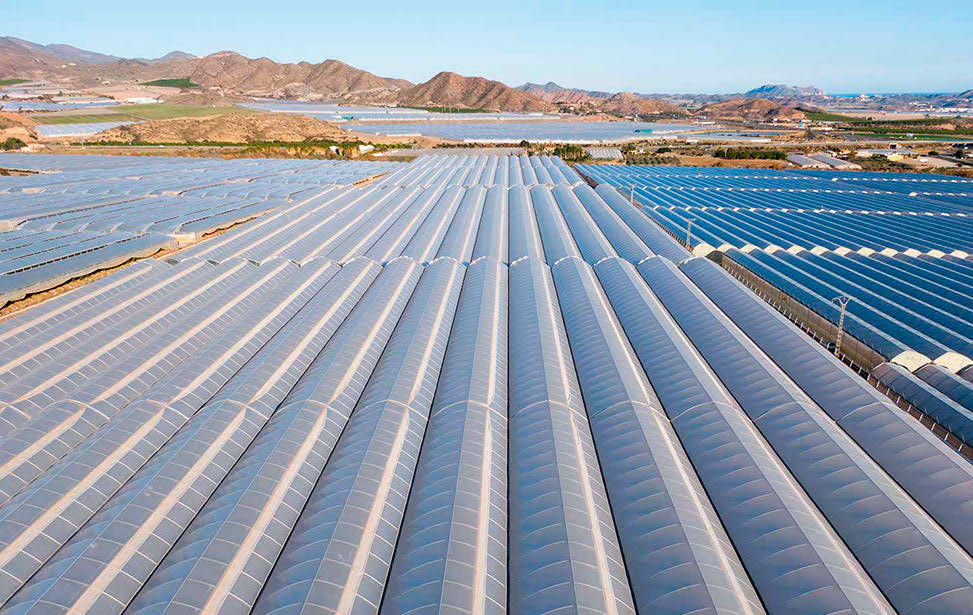- English

Grupo Hortofrutícola Paloma expands its greenhouses with Novagric to achieve 20% more production using less water and energy. Last year Novagric carried out a new project consisting of the design, manufacture, and construction of technologically equipped greenhouses for tomato growing in southeastern Spain.
This project has been implemented to achieve a more digital agriculture, committed to the environment and efficient processes. An initiative that is already yielding promising results and profitability.
The Paloma horticultural group, specialized in the production of fruits and vegetables, sells more than 90% of its crops to Europe, and has always stood out for its clear commitment to sustainable development. Since 2016 they calculate their energy footprint, in order to reduce consumption. In addition, they have recently been certified in the water footprint, which evaluates the impact of water scarcity.
Novagric shares this commitment to sustainability by providing the technologies, technical support and know-how needed to grow a more prosperous future. A company that was born more than 42 years ago to transform agriculture through more efficient systems and has been working alongside the most enterprising growers in this ongoing improvement.
The project has been developed in a hydrographic basin with water shortage problems. Aware of this situation, the greenhouse has been fully equipped with technologies to optimize resources, seeking better climate control and higher yields in cultural work.
“Our main goal is to maintain environmental sustainability, reduce water and energy consumption, and for this purpose we are constantly monitoring our crops,” explains Elena Blaya, Environmental Technician at Paloma Group.
The project developed by Novagric has a total of 10 hectares, “with 2 hectares per module to make technical and agronomic management compatible with economic profitability,” says Juan Pardo, head of innovation and greenhouses at Novagric.
A project carried out during the pandemic, in which security measures were taken to comply with the planned execution, assembly and installation to start planting on time.
J. Pardo explains that the main technical criteria followed in the design of these greenhouses have been to “maximize solar radiation reducing obstacles to increase light entry, so plants perform photosynthesis”.
To make climate management more efficient, passive ventilation systems, automatic energy-saving screens, temperature and humidity sensors, and a climate station have been installed.
David Pérez, Paloma Group technician, points out that all this technology is controlled with climate and irrigation software, which allows them to measure, program and analyze all the parameters. “If you control the humidity and get more light, you will increase your production during the winter, which is key in these latitudes.”
Novagric, for its part, offers technical support for automatic climate management, fertigation and monitoring of the structure’s performance throughout its useful life, emphasizes Pardo.
They are currently growing cherry tomatoes using hydroponic and automatic drip irrigation, with exhaustive control of drainage and fertilization to optimize water consumption to the maximum and achieve a zero gray water footprint.
For pest control, Paloma Group have opted for biological control measures and zero-waste products to reduce the use of phytosanitary to the minimum.
The results of this project are impacting on production and the improvement of cultural works, allowing higher trellising, obtaining more clusters, increasing the speed of flowering and the quality of the plant.
“These greenhouses are much more suitable to what we are looking for now, with greater volume, we have intensified production and we achieve yields up to 20% more compared to traditional ones,” says Antonio Robles, production technician at Paloma Group.
Despite the fact that the coming years bring climate, productive and economic challenges, these new initiatives will make possible to achieve profitable and sustainable agriculture.
“From the Horticultural Group Paloma we are firmly committed to innovation and research, so we believe that the only way to achieve a safe and high quality food is to invest in the latest technology projects that allow us to maximize production with the minimum use of resources while reducing our environmental footprint” concludes Ana Hernandez, R+D director.
Click here for the video !